




 RESEARCH STUFF
RESEARCH STUFF 
COMPUTER VISUALIZATION OF ATOMIC FORCE MICROSCOPY (AFM) AND MOLECULAR DYNAMICS SIMULATIONS
by Tai-Hsi Fan, Ph.D.'03 from MISC-Lab
Preamble by Tai-Hsi: "The purpose of visualization is insight, not pictures...indeed, the effective scientific visualization not only can extract the useful information for research activities, but also propagate the fundamental physical concepts for education purpose."
Source: Fan, T. H. and Fedorov, A. G., 2001, "Visualization of Atomic Force Microscopy from Molecular Dynamics Simulations", ASME Journal of Heat Transfer, Vol. 123, pp. 619.
Introduction: AFM and scanning tunneling microscope were invented by Gerd Binning and his colleagues in 1986, both of them are used to resolve (image) the surface detail down to the atomic or molecular level with nondestructive probes. Instead of using a current, AFM simply uses the interatomic/intermolecular forces. Figure 1 shows how this simple concept works: the elastic cantilever is playing the role like an elastic spring with an attached tinny tip at the contact side. Once the cantilever approaches to the sample, the interatomic/intermolecular or surface forces (attractive or repulsive) will significantly deflect the cantilever, in atomic length scale. By sensing the cantilever's deflection using laser-optical technique such as interferometry or beam deflection, the interaction forces can be locally quantified. To resolve the whole sample surface, a scanning system is used to move the substrate with respect to the probe in a raster pattern, then the topographic surface image (height field) is generated after signal and image processings. Once the topographic information is obtained from the relatively short separation ("contact mode", tip-sample separation is less then 1~2 atom diameters), the sensing probe can have certain offset distance with respect to the surface contour, therefore the longer range interatomic forces such magnetic, electrostatic, and van der Waals attaction forces can be recorded.
Figure1: Schematic of the AFM principle for surface imaging
Vizualization of molecular dynamics (MD) simulations of atomic interactions between the AFM cantilever tip (Ni, nickel, shown in red colour) and the soft substrate surface (Au, gold, shown in gold colour) separated by a thin polymer film consisting of 16 segment long chain molecules (shown in green colour) [data source: Landman, U., Luedtke, W. D., Ribarsky, M. W., "Structural and Dynamical Consequences of Interactions in Interfacial Systems", J. Vac. Sci. Tech., A7 (4), pp. 2829-2839 (1989)].
Figure 2: Instantaneous frame-by-frame capture of the molecular motion
Figure 3: Instantaneous frame-by-frame capture of the molecular motion (cont'd) combined with visualization of the atomic normal stresses in Nickel (cantilever) and Gold (substrate) shown as a colour map on the vertical cutting plane
Figure 4: Instantaneous topographic image of the top substrate surface layer of Au molecules combined with visualization of the local atomic sheer stresses shown as a coloured vector field
VISUALIZATION OF FLUID-FLUID AND FLUID-GAS INTERFACES AND THEIR INTERACTIONS IN A SLOWLY RISING, VISCOUS COMPOUND DROPLET
by Tai-Hsi Fan, Ph.D.'03 from MISC-Lab
Understanding of the fluid-fluid and fluid-gas interfaces and their interactions in the multiphase/multicompound systems is of the great fundamental interest as well as of the significant practical importance. The processes of droplet coalescence, liquid thread pinching, liquid drainage and mechanical rapture of pure and contaiminated liquid films are tremedously complex fluid mechanics phenomena and, at the same time, of breathtaking artistic beauty. In our laboratory, we are developing advanced simulations tools based on the Boundary Element Method which we would like to use to better understand and to control the fluid-fluid and fluid-gas interfaces. To validate the theoretical models of the phenomena and also to test our hypothesis of the origin and nature of various interface instabilities, we use a high resolution cinematography to observe the large deformations of multiple interacting fluid interfaces in a compound viscous droplet formed by mutually immiscible and transparent liquids.
Shown in the first picture below (left panel) is a sequence of events occuring when a water droplet is injected from the small diameter, inner nozzle, while being wound round by the silicone oil injected from the larger diameter, concentric outer nozzle, and the whole system is immersed into a water bath. One can see on this picture the interface deformation, detachment, pinching, and carriage behavior of this compound droplet. On the second picture (right panel), we show a sequence of events occuring when vegetable oil is injected into the silicon oil, and water is still used in the bath. One can see a spherical cap vegetable oil formed near the top of the silicon droplet, which the continuously evolve and deform both the inner vegetable oil/silicon oil interface as well as the outer interface between the silicon oil and water to form an unstable thin liquid thread.
This fascinating, low speed dynamics of multicompound droplet evolution is governed by the combined influence of buoyancy forces, mismatch in the viscous sheer rates in the interfacing fluids, the surface tension forces of each pair fluids, and forced flow of fluid injected from the nozzles.
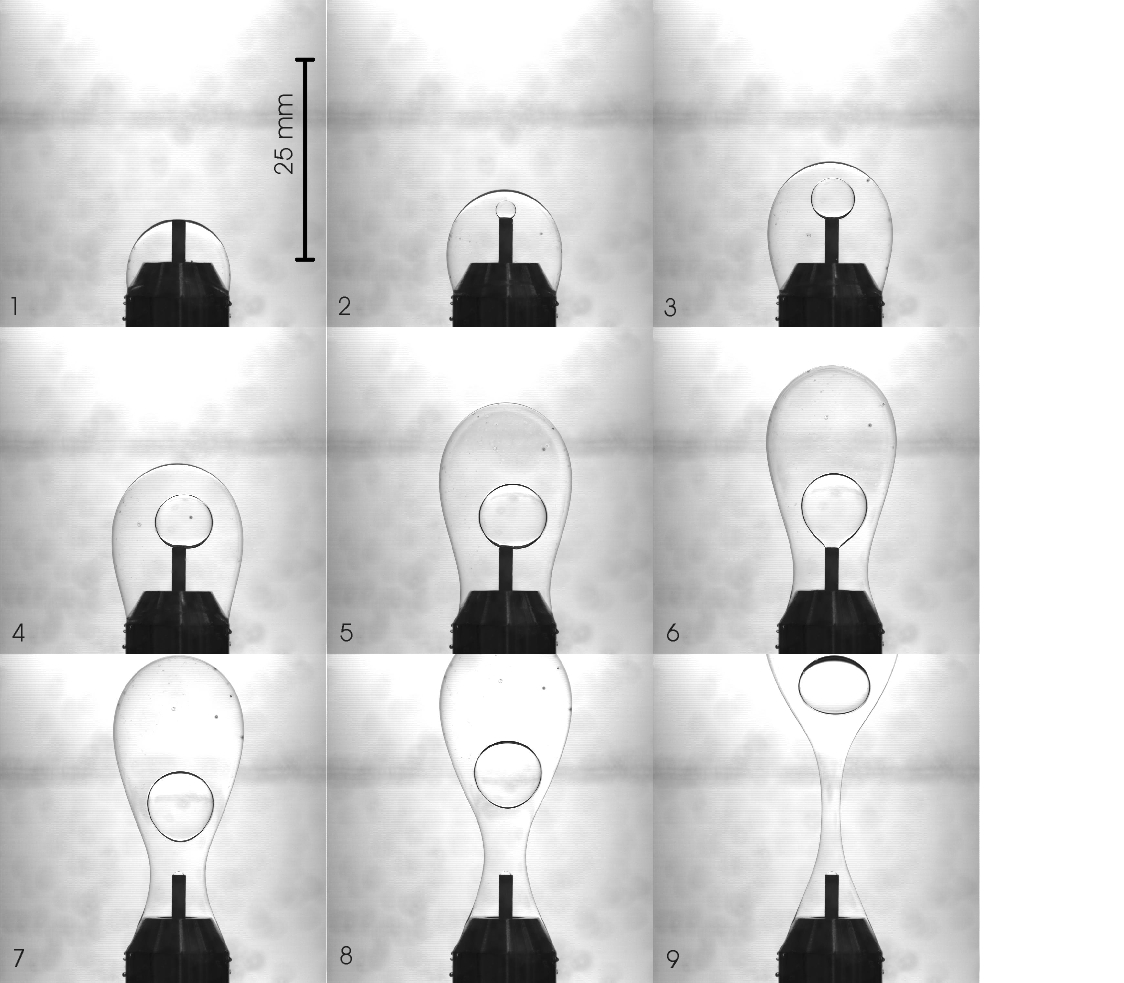 |
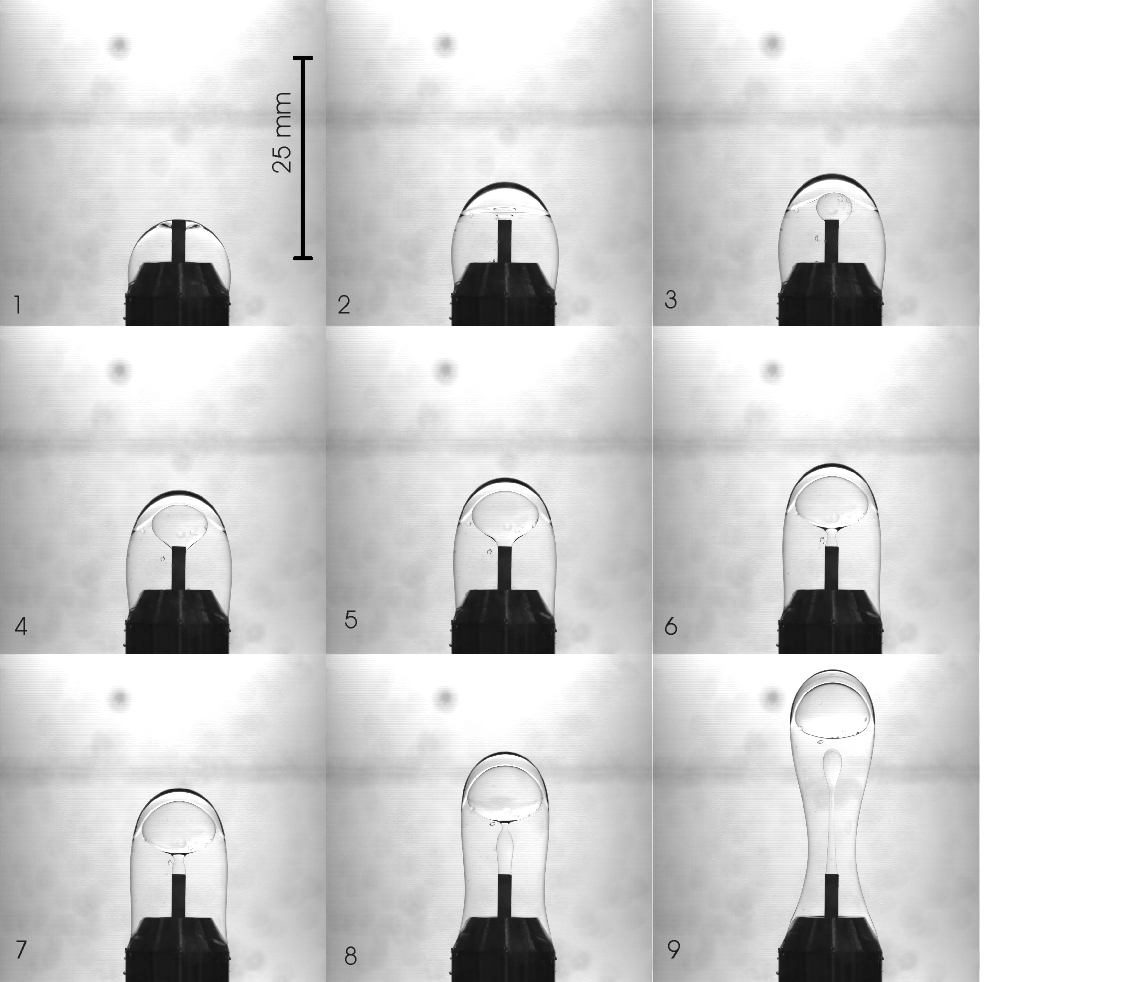 |
Left Panel: The evolution of a viscous water-silicon oil-water compound droplet injected from the concentric nozzles.
Right Panel: Hydrodynamic interaction of multiple fluid interfaces in the case of a vegetable oil-silicon oil-water compound droplet injected from the concentric nozzles.
VISUALIZATION OF PICOLETER (OD<8 um) WATER DROPLET EJECTION AT 1.5 MHz FREQUENCY BY MICROMACHINED ACOUSTIC ATOMIZATION DEVICE DEVELOPED IN OUR LAB
by J. Mark Meacham, Ph.D. student at MISC-Lab
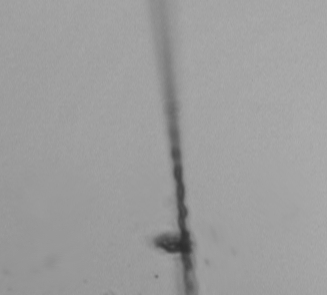 |
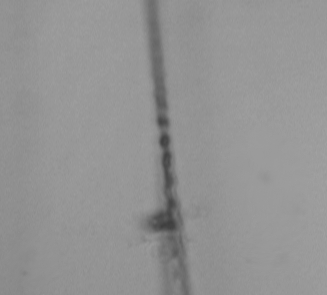 |
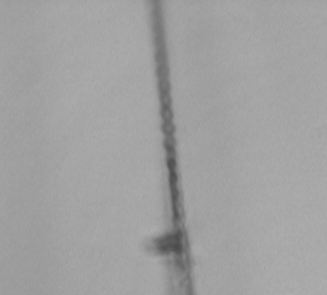 |
NANOSCALE WRITING USING ELECTRON BEAM CHEMICAL VAPOR DEPOSITION SYSTEM UNDER DEVELOPMENT IN OUR LABORATORY
by Konrad Rykaczewski, a recent Ph.D. graduate from our group
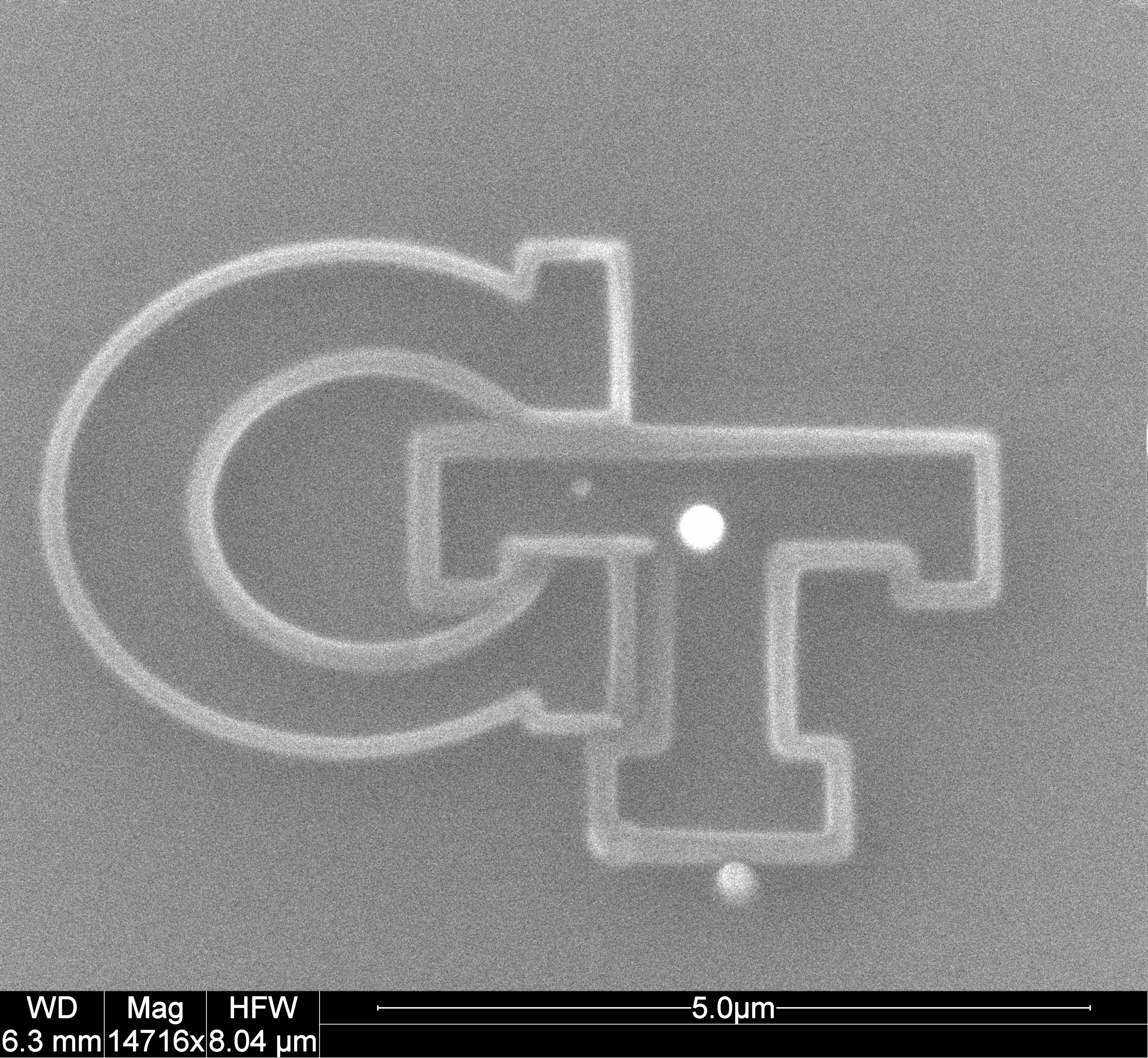
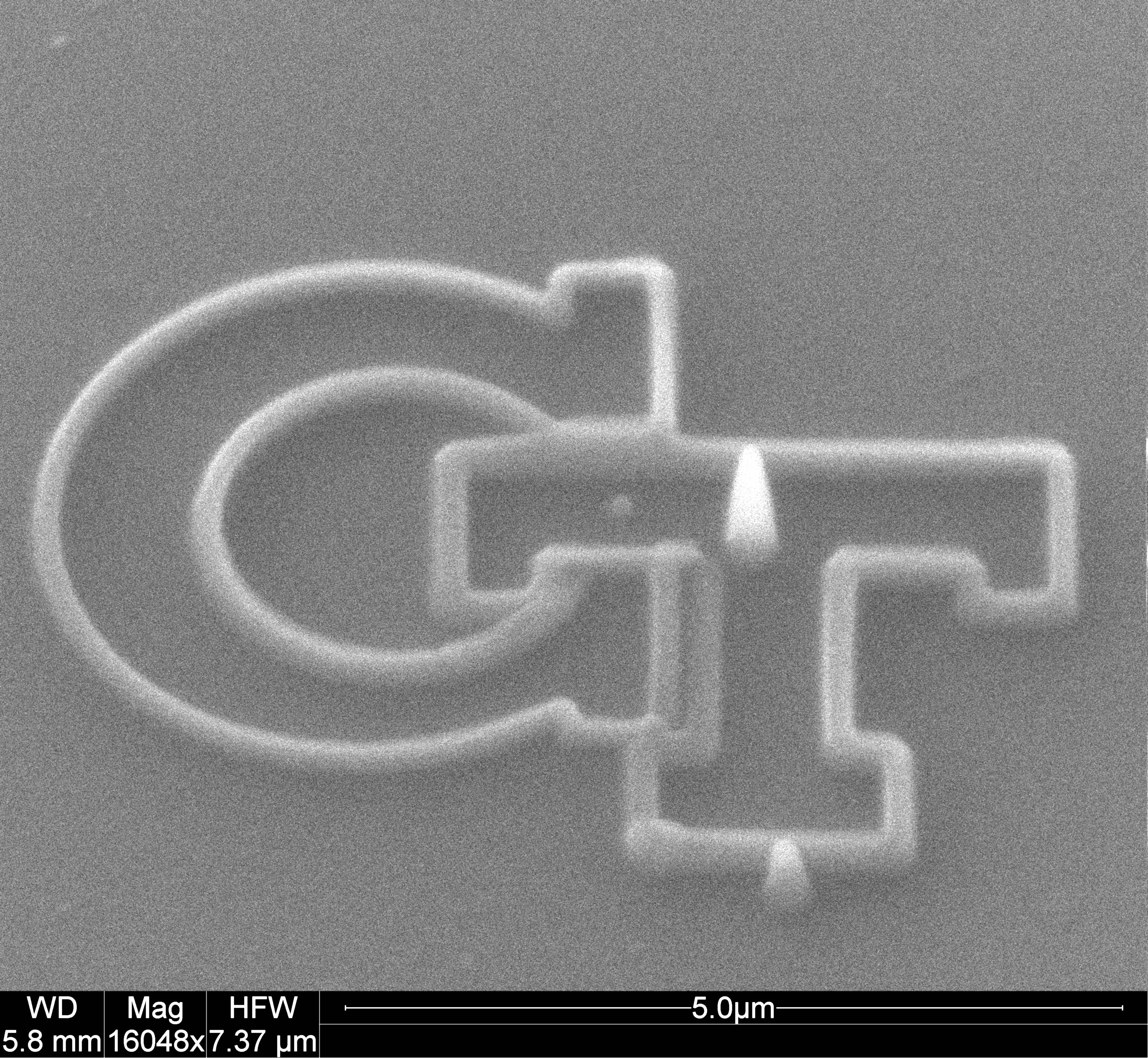
 LIFE IN & OUT OF THE MISC-Lab
LIFE IN & OUT OF THE MISC-Lab
Dinner Party in July 2003: Julie, Mark, Shivesh, Andrei, Roger, Sunil, Tai-Hsi, Cornelius (from left to right)
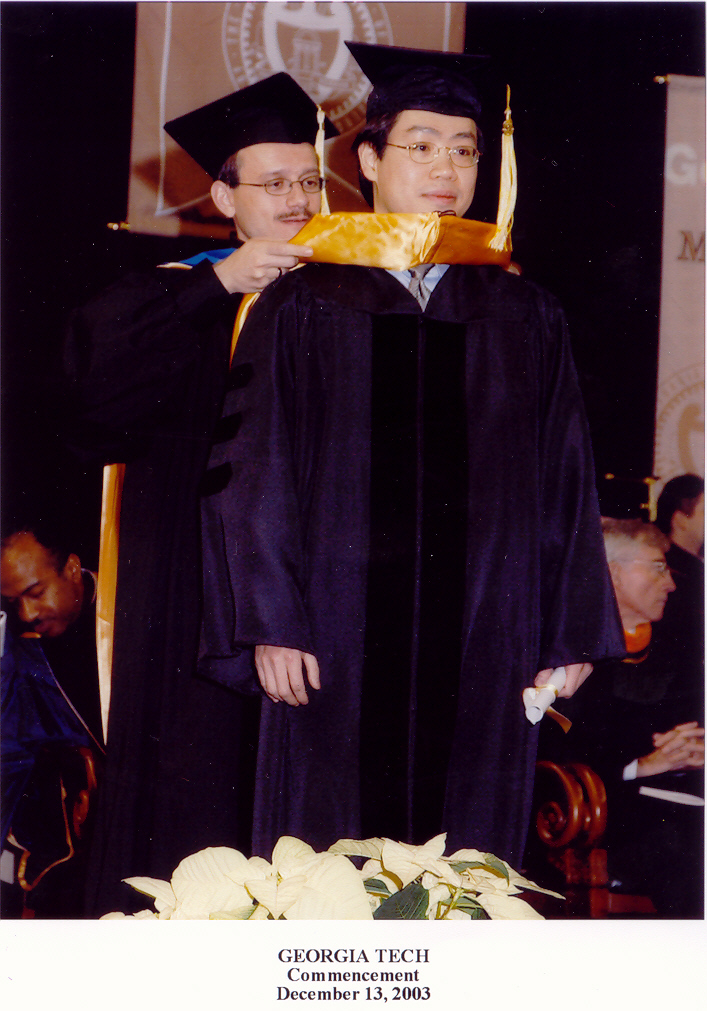 |
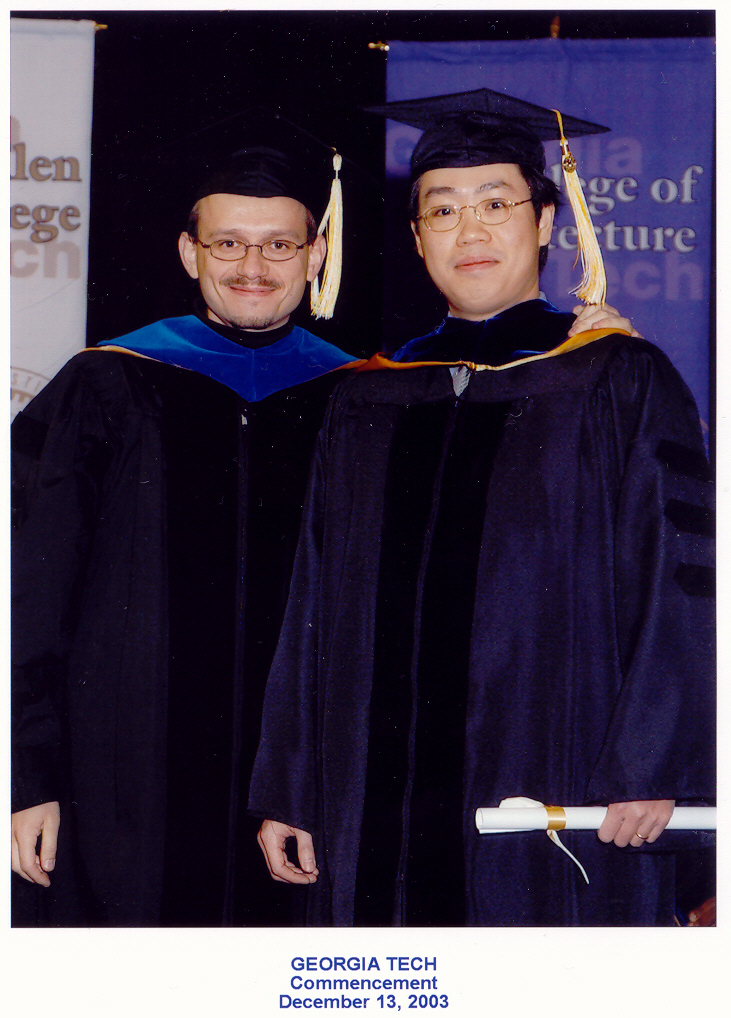 |
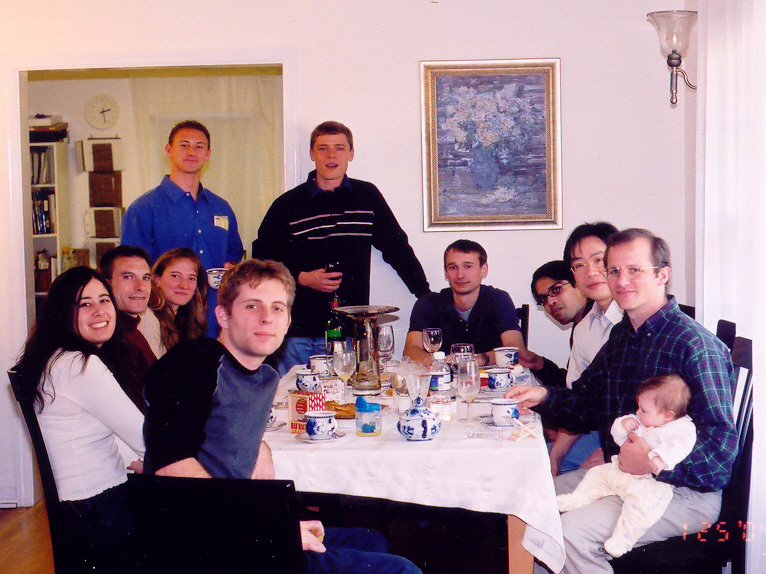
Chinese New Year Party, January 2004 (going clockwise): Robert, Paula, Stephane, Laura, Logan, David, Mark, Shivesh, Tai-Hsi, Peter (with Charlotte on his laps)

After Tai-Hsi's farewell seminar on "Selected Topics in Scaling Analysis of Interfacial Transport Phenomena", September 2004, Present MISC-ers (going clockwise): Audric, Young, Ted, David, Shivesh, Tai-Hsi, Mark (Jr.), Mark (Sr.), Andrei, Ming, Logan, Stephane, and Ben (missing Robert, Roger, and Peter)
